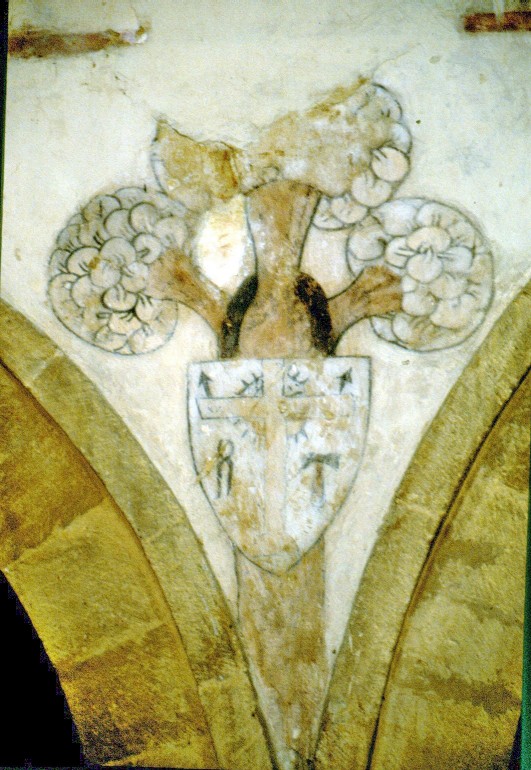South Newington, Oxfordshire (†Oxford) C.14/15
The Instruments of the Passion

It is fairly unusual to find the Instruments of the Passion painted directly onto a church wall, as here. They are more often found in English churches in low-relief carving, and most commonly of all, in devotional books. Devotional meditation on the Instruments of the Passion was commonplace among the devout, and encouraged by clergy. Not even the most basic, functional level of literacy was necessary for the interpretation of these symbols.
Here, in the small and circumscribed space available in the spandrel of an arch, treatment is necessarily abbreviated. The centrally-paced shield reinforces the idea of these as the ‘Arma Christi’ or Arms of Christ, an alternative name for the Instruments of the Passion. The Cross is in the centre, with the Crown of Thorns suspended behind its transverse bar. Below are pincers for removing the nails, with a hammer on the other side of the Cross at the right. I can see only two nails, one in each upper quadrant, but there may well be another, faded to nothing now, lower down. An area of yellowish pigment, below and to the right of the pincers, might be the ‘gorgeous robe’ used in the Mocking of Christ, but it is indecipherable now.
One of the most interesting features is the superimposition of the shield on a flourishing tree, to emphasise the point that these weapons of torture are at the same time symbolic of new and burgeoning life. The bubble-like treatment of the leaves is similar to that in the Martyrdom of St Edmund at Pickering, but I think this painting is probably a little earlier than that. The fact that it is painted directly below the scene of the Resurrection in the South Newington Passion cycle is probably not accidental.